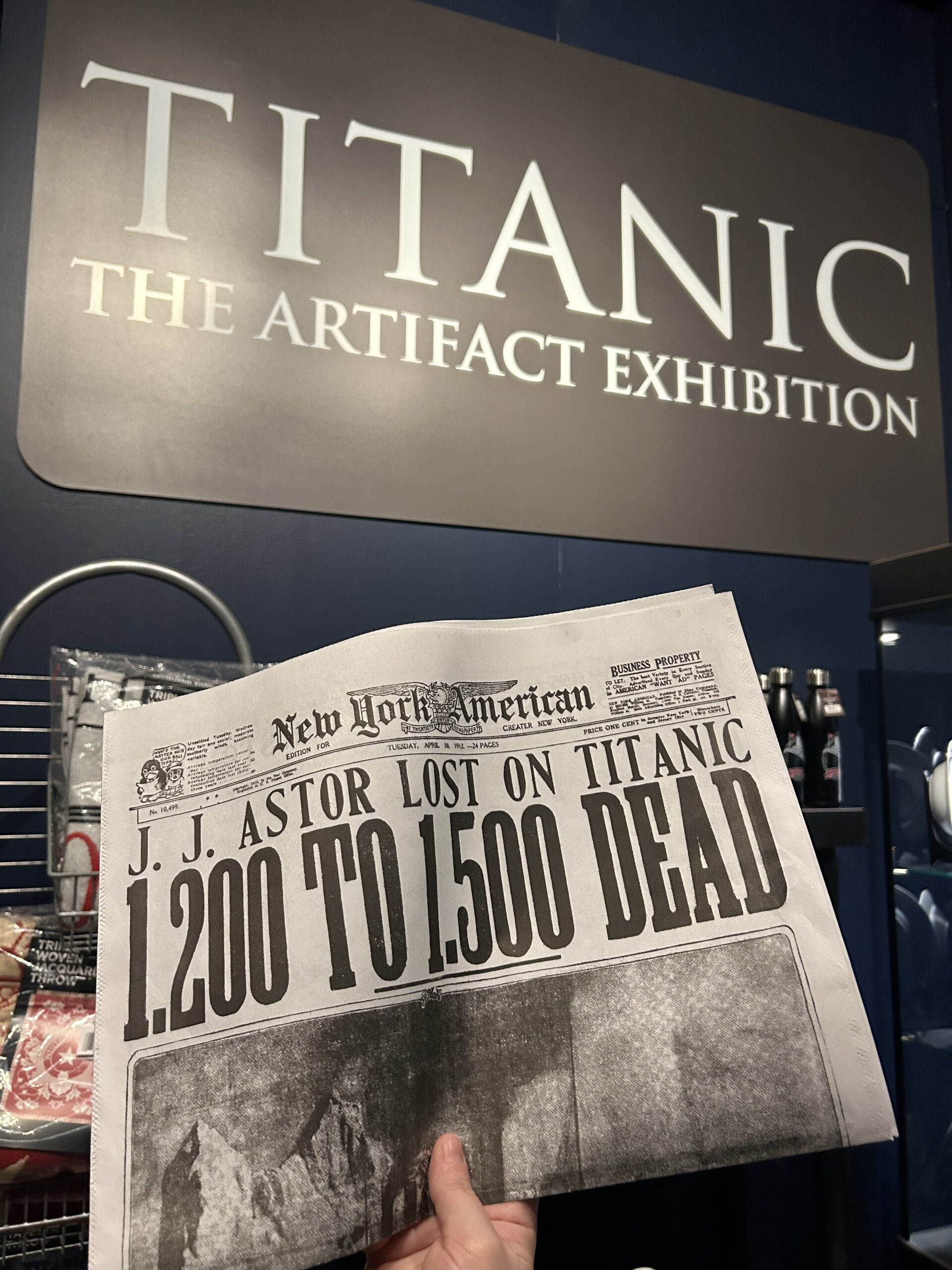
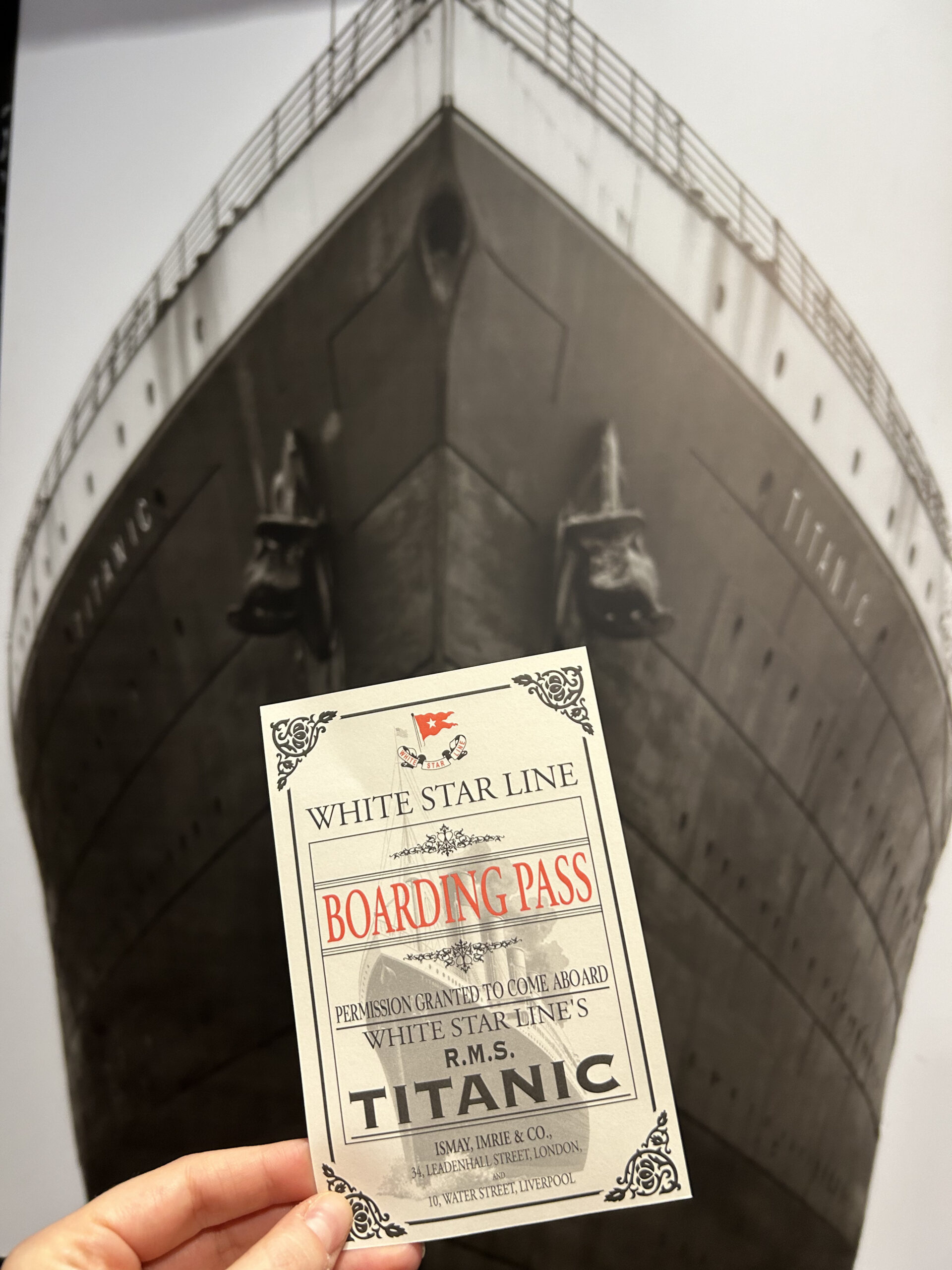
The infamous Titanic, the “unsinkable ship” that met its icebergian demise in the freezing cold waters of the North Atlantic in April 1912, has risen from the depths of the sea …or at least 5,500 artifacts from the shipwreck have. And for a limited time TITANIC: The Artifact Exhibition brings 154 of those authentic honorably and carefully recovered artifacts to Carnegie Science Center’s PPG SCIENCE PAVILION®.
From now until April 15th (aka the 112th anniversary of the ship’s sinking), visitors can see first-hand real artifacts from Titanic — from parts of the ship itself to suitcases, perfume bottles, opera pumps, and even dinnerware.
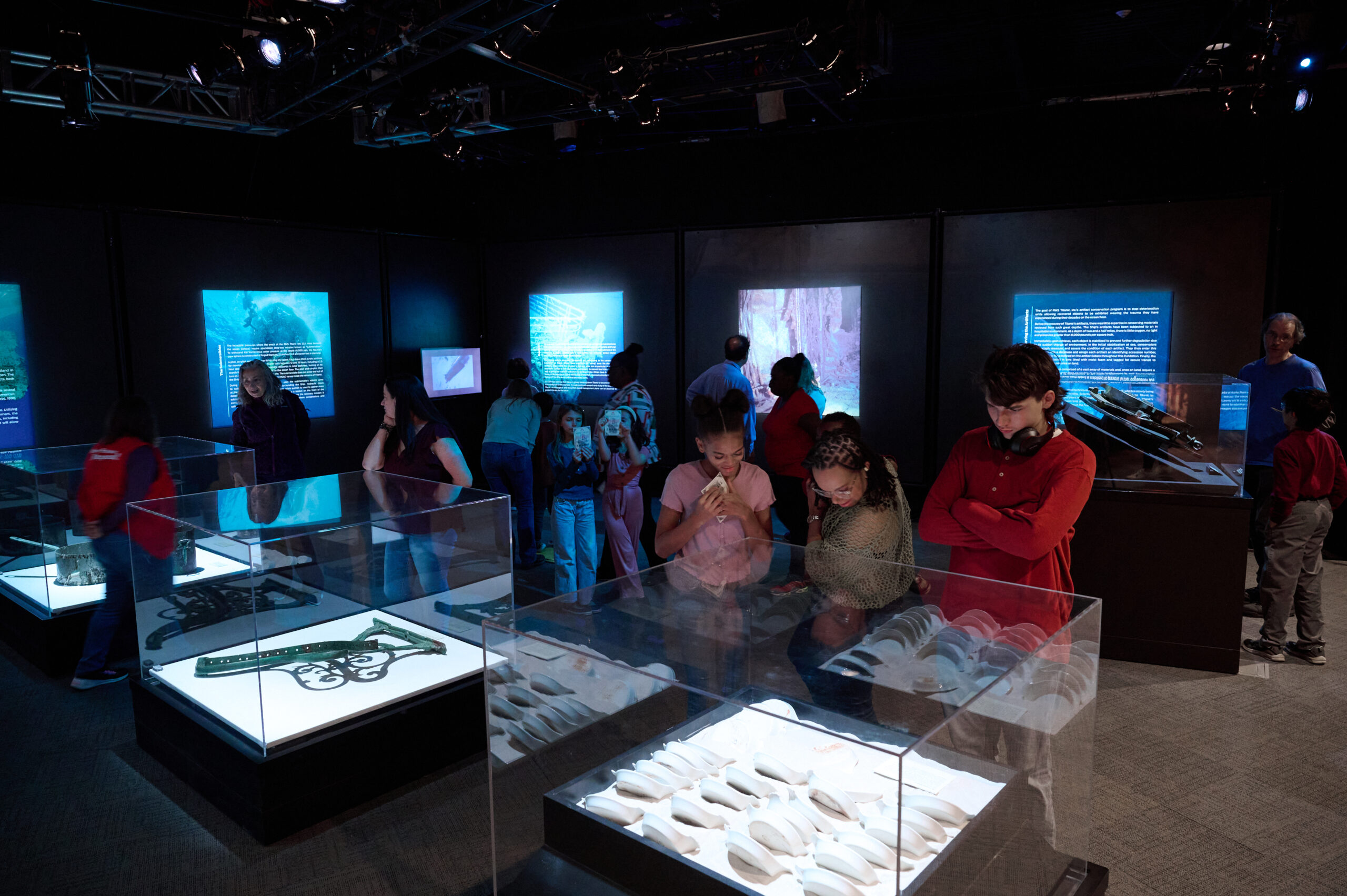
The meticulously curated Exhibition is filled with artifacts that captivate and poignant stories of real passengers and crew members that bring history to life.
Upon entering the Exhibition, you are handed a boarding pass bearing the name of an actual passenger. Traverse the Exhibition, and soon your imagination will transport you into the opulent world of the “Ship of Dreams.” Between the full-scale room re-creations, authentic artifacts, and experiences you go on a journey that connects you with the past.
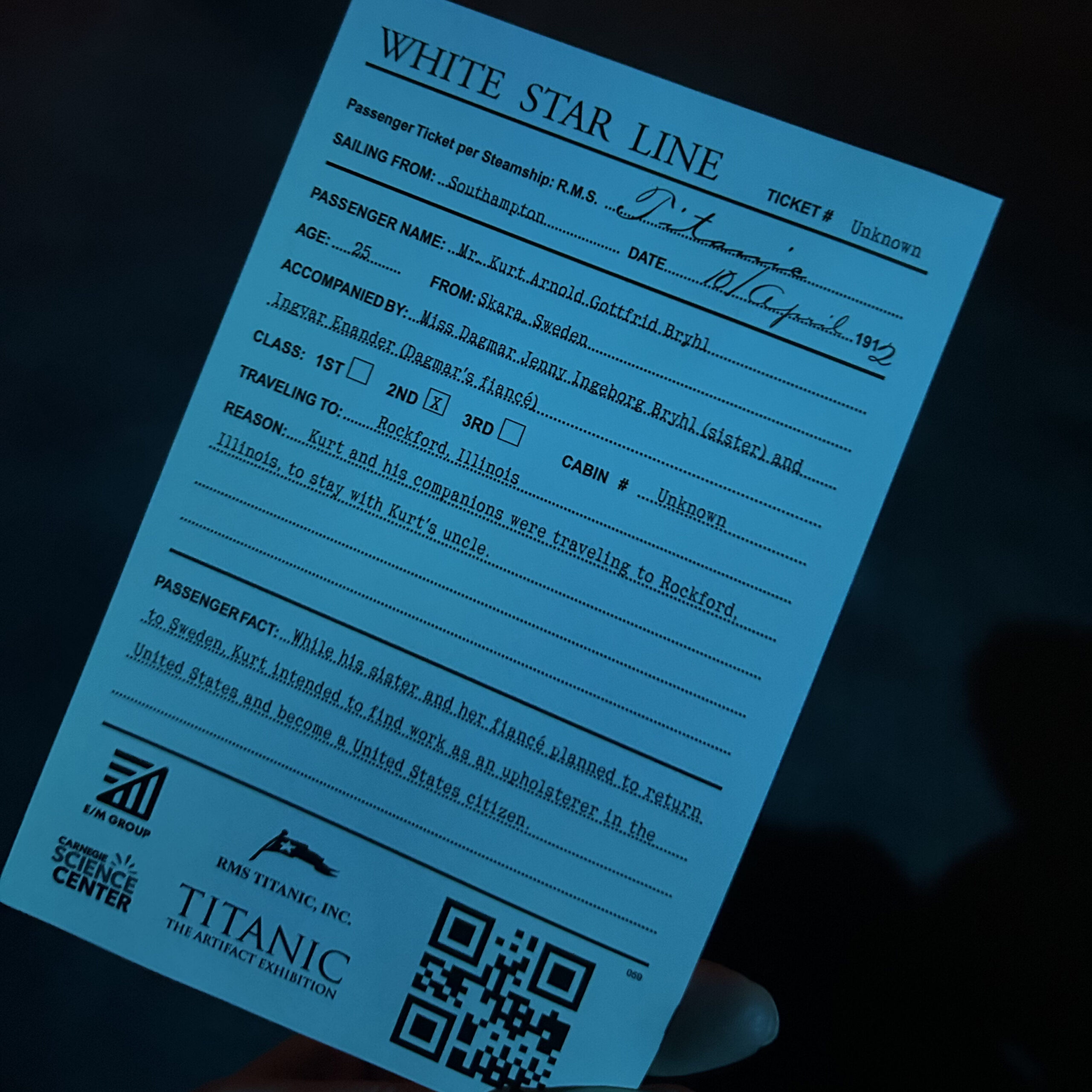
Viewed by more than 30 million people worldwide, this educational and entertaining experience is a unique opportunity for visitors of all ages to learn about the tragic sinking of the Titanic. It is a collection that bridges the gap between reading about history and experiencing it.
TITANIC: The Artifact Exhibition is available at Carnegie Science Center from the E/M Group’s affiliate RMS Titanic, Inc. which is dedicated to preserving the legacy of the ship, wreck site, and the stories of her passengers and crew members.
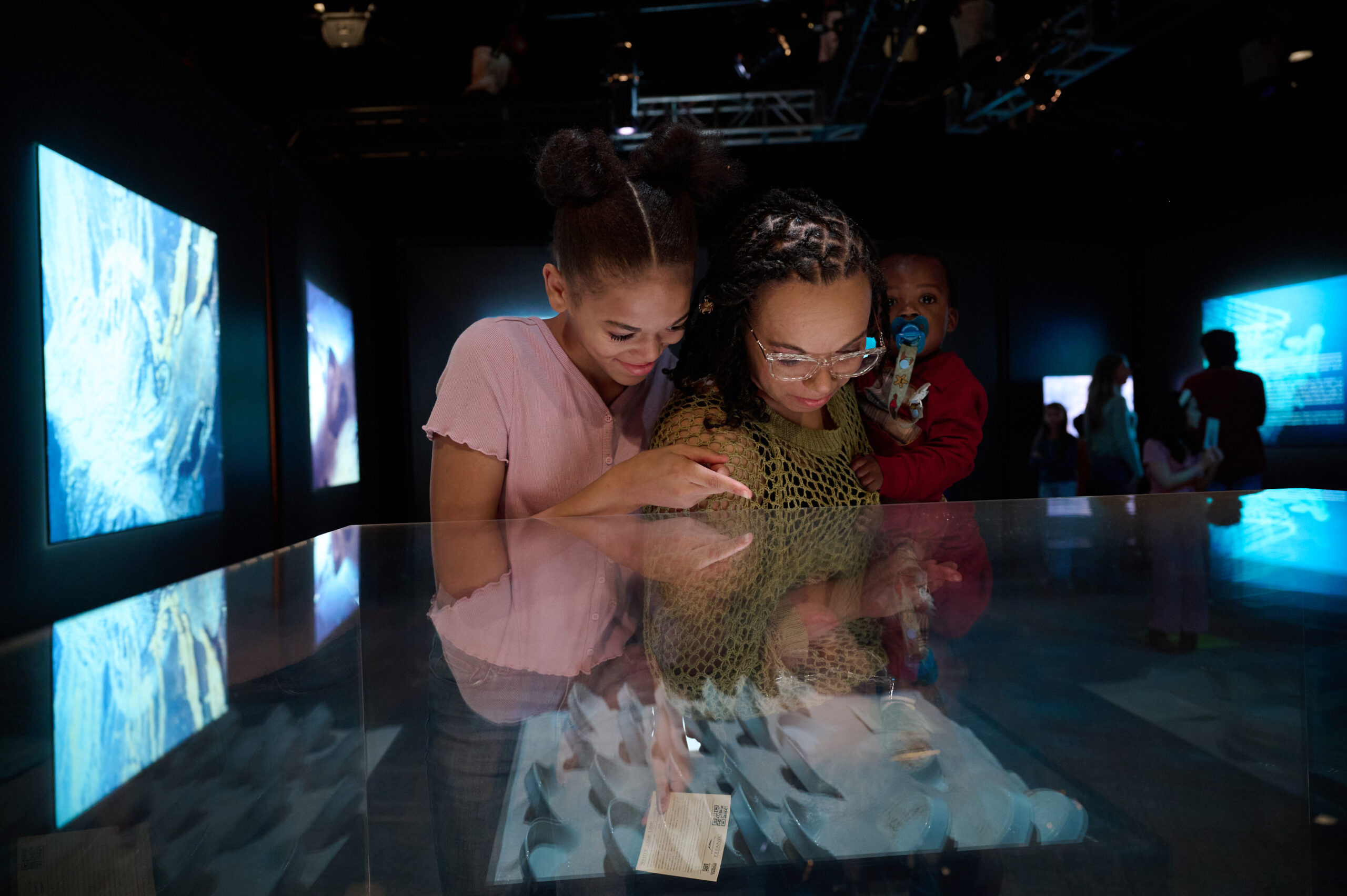
“We bring guests an unparalleled Titanic experience steeped in discovery, inspiration, and human connection,” said Jessica Sanders, President, RMS, Titanic, Inc. “It’s the real stories of the passengers and crew, told through real artifacts that continue to resonate with guests and capture our hearts.”
“We often say that if you’ve learned the name of one passenger or if you go home and hold your loved ones a little closer then we’ve done our job,” said Ms. Sanders. “There are so many entry points to the story — some people are attracted to the engineering of the Titanic, or fascinated by the Edwardian period and social classes, the events of that fateful night and the iceberg, the stories of self-sacrifice, or the discovery of the wreck site and conservation of artifacts. You can take away so much from this Exhibition. If you take away just one thing we hope that you participate in carrying this history forward.“
Exploring the Exhibition: Artifacts, People, and Stories

The Exhibition is spread through a large room, divided by walls and displays into eight galleries. It contains many flat text panels as well as video screens (sans audio) throughout the Exhibition. The low-level lighting and soft music creates a fitting ambiance; spotlighted individual displays call your attention to specific details. Most of the Exhibition is eyes-only, but there is one display you can touch: a reproduced iceberg cooled to -2° C/28° F; the same temperature of the North Atlantic’s waters on April 15th, 1912.
Discover the Pittsburgh Railroad Station postcard from Howard Irwin’s suitcase (his luggage was onboard; he was not). Imagine the aromas of the Saalfeld perfume bottles. Of the 65 vials that a Manchester, England First-Class passenger and perfume maker, Adolphe Saalfeld, packed in his luggage, 62 were recovered from the ocean floor along with their leather portfolio. Second-Class passenger Edgar Andrew was originally supposed to embark on the steamship Oceanic, but due to a coal strike, had to rebook passage aboard Titanic. Consider his Swifan calf skin opera pumps and what it would have been like to stand in his shoes.
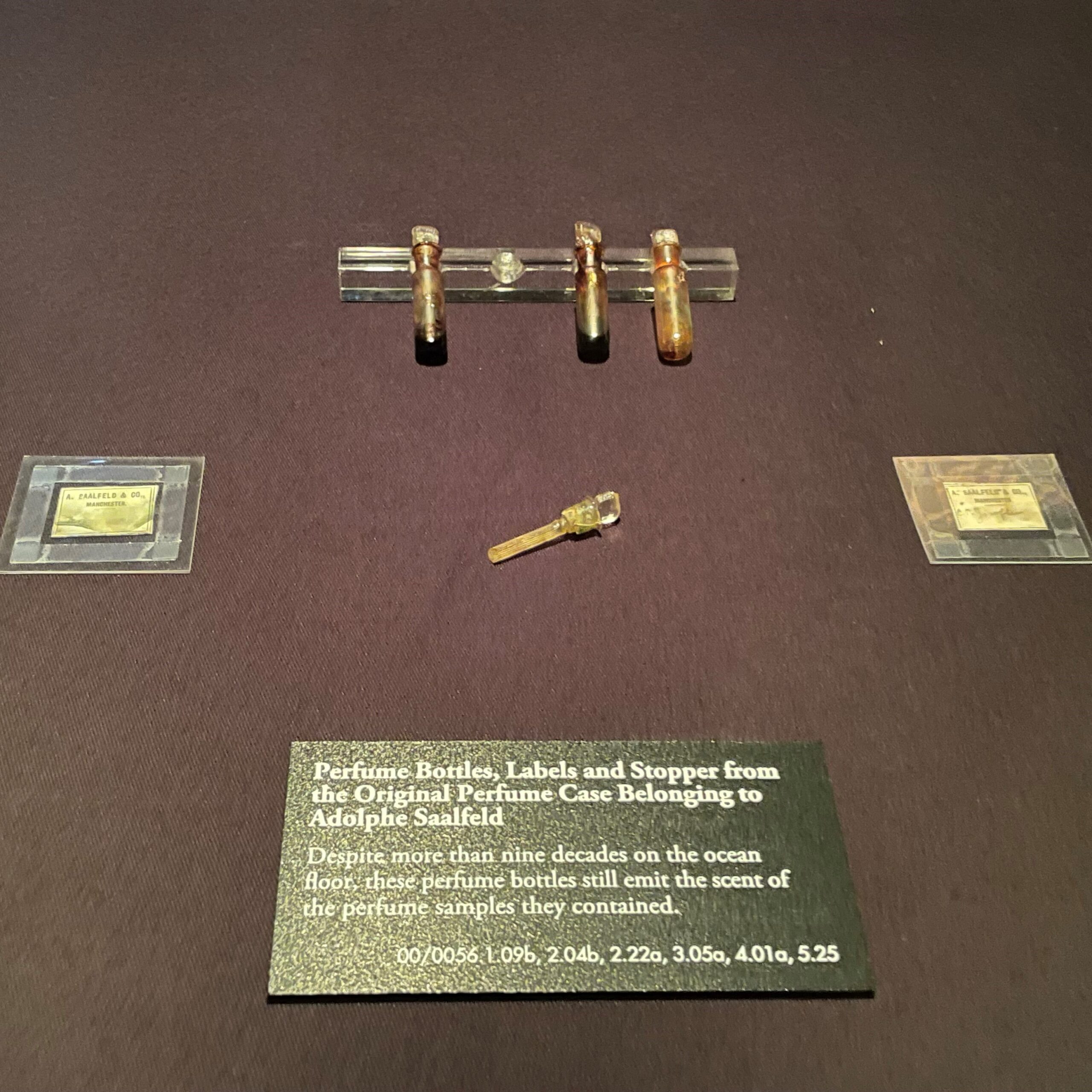
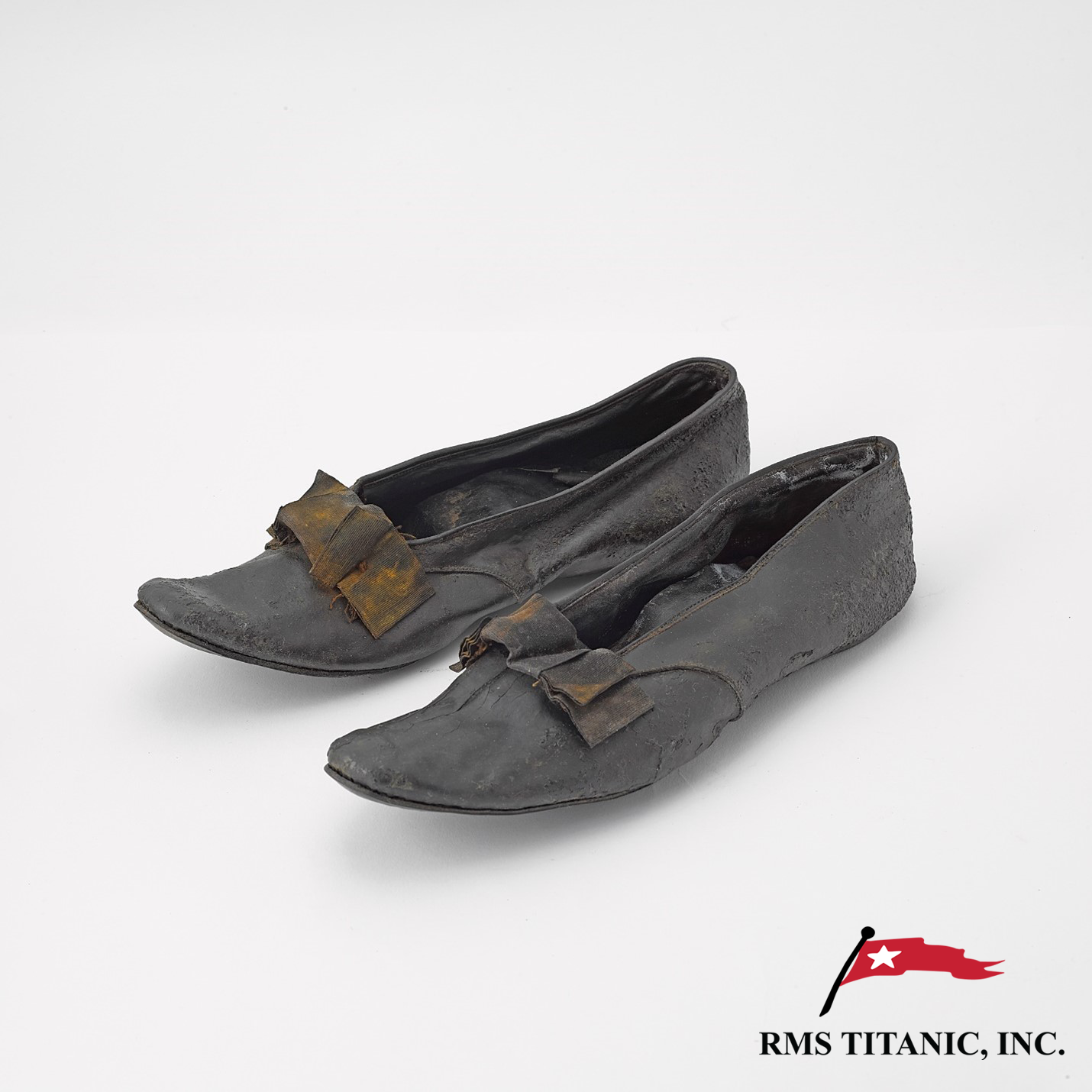
Those are just a few of the artifacts (along with moving personal stories) you will uncover as you contemplate the 154 artifacts on display. Benches for seating are located throughout so that you can even sit as you think about what the experience might have been like for those aboard the ill-fated ship.
“We curate the artifacts for each exhibition that we do,” said Jessica Sanders. “It is a unique opportunity to see something that you really cannot see anywhere else. The artifacts tell their own stories. People like to look at the big heavy wrenches that have been deteriorated by the ocean and now look like wood instead of steel. But what I find the most surprising are the paper goods. The concept of postcards on display, recovered from the bottom of the ocean, and over 100 years later to still see the picture on them? It’s a little mind blowing.”
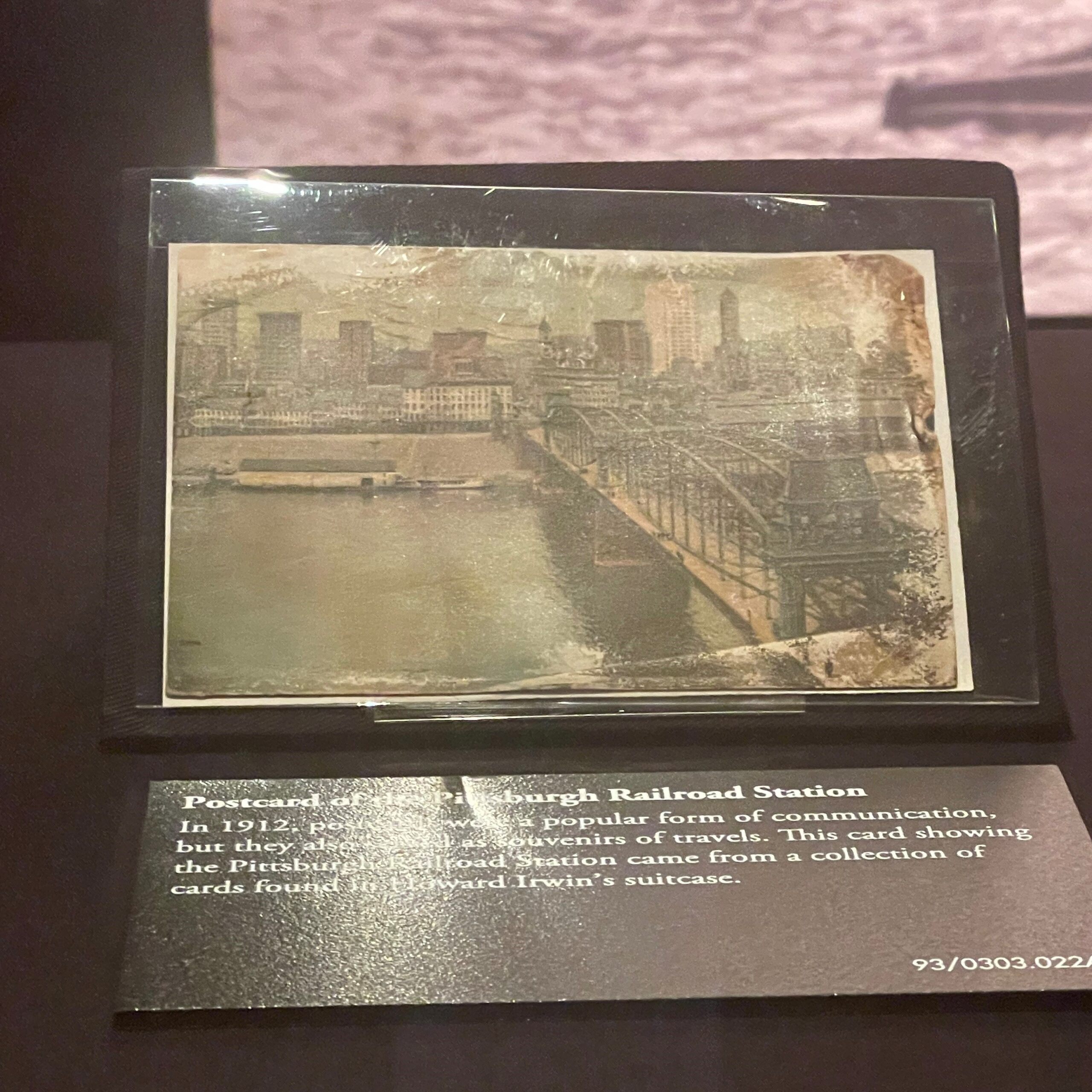
Planning Your Visit to TITANIC: The Artifacts Exhibition
Tickets to the TITANIC: The Artifact Exhibition are separate tickets from General Admission to Carnegie Science Center and can be purchased without also purchasing a general admission ticket. Though if you purchase both TITANIC: The Artifact Exhibition and General Admission you can save up to $6. (Groups of 15 or more people also receive a discount; call 412.237.3400 to book a group visit.)
TITANIC: The Artifact Exhibition Tickets: For all Members tickets cost $12.50. Tickets for Nonmembers: Adults $20, Seniors (65+) $18, Child (3-12) $16.
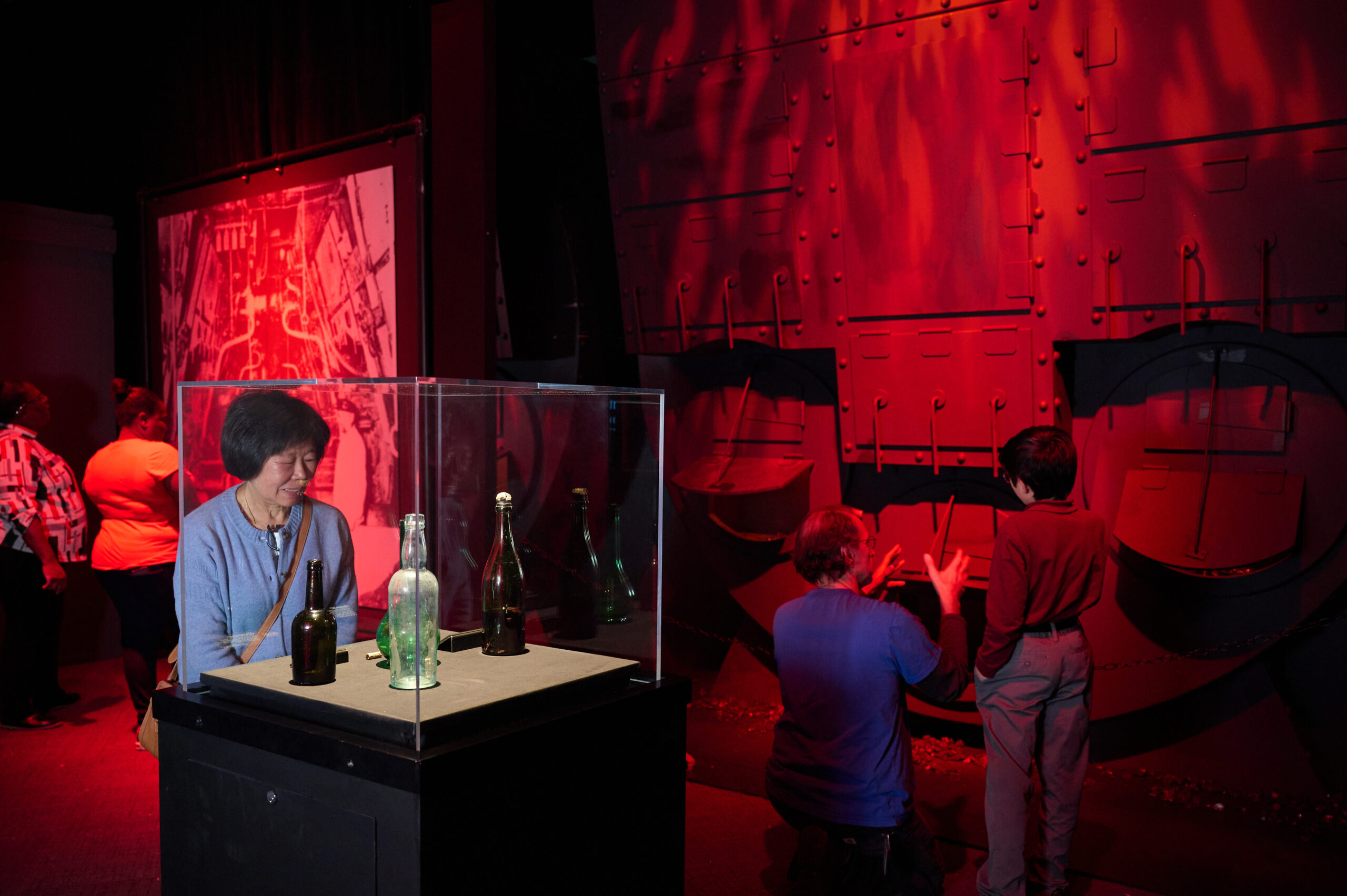
Guests are encouraged to purchase timed-tickets in advance online at the Carnegie Science Center website.
It is recommended that you allot 60–90 minutes to tour the full Exhibition. The Exhibition closes promptly at 5pm on normal days of operation. During Saturdays, there are extended hours only for TITANIC: The Artifact Exhibition. The last entry is 6pm and it promptly closes at 7pm.
Visitors are allowed to take photos of the Exhibition; flash photography/videography is not permitted.
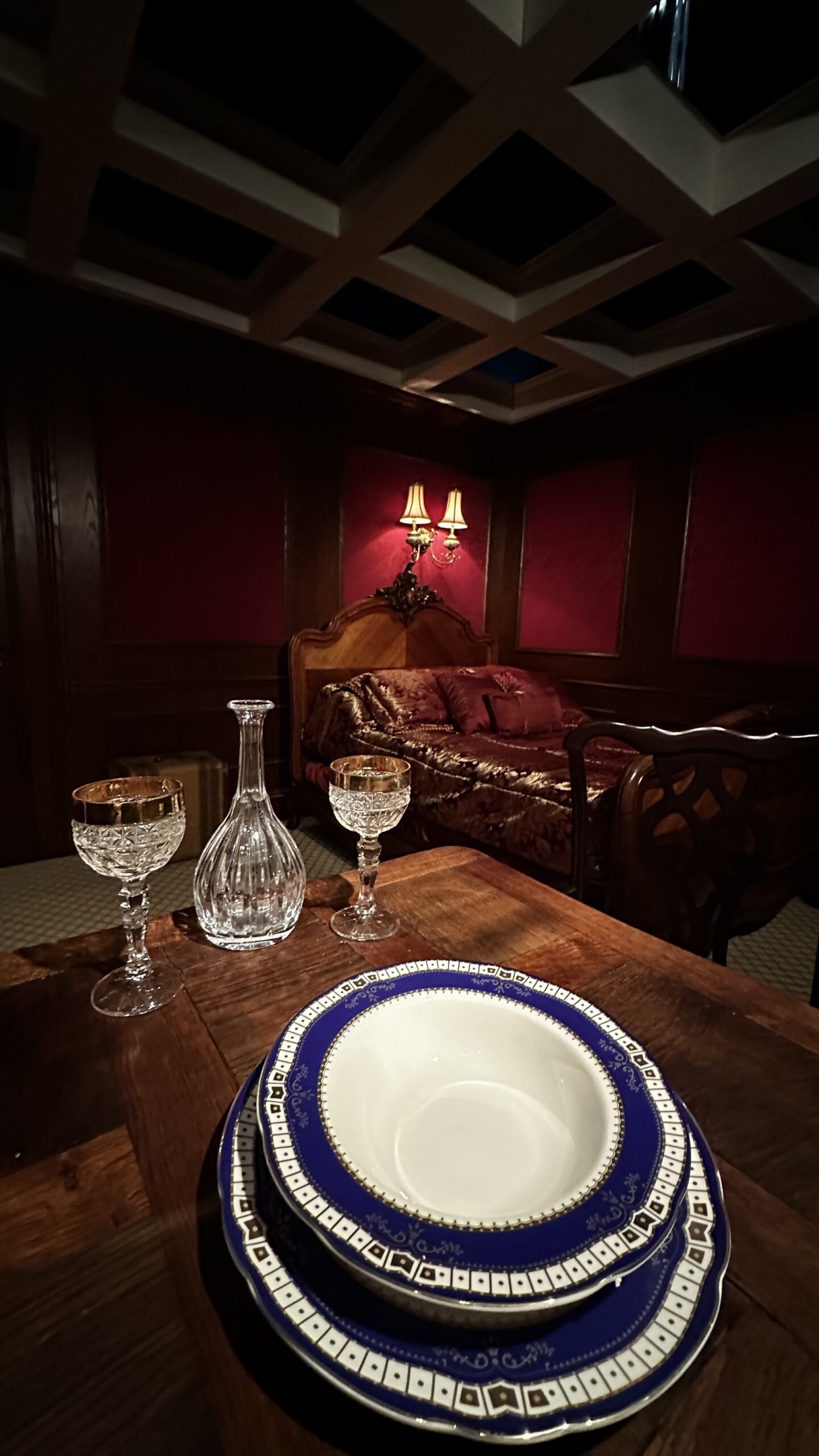
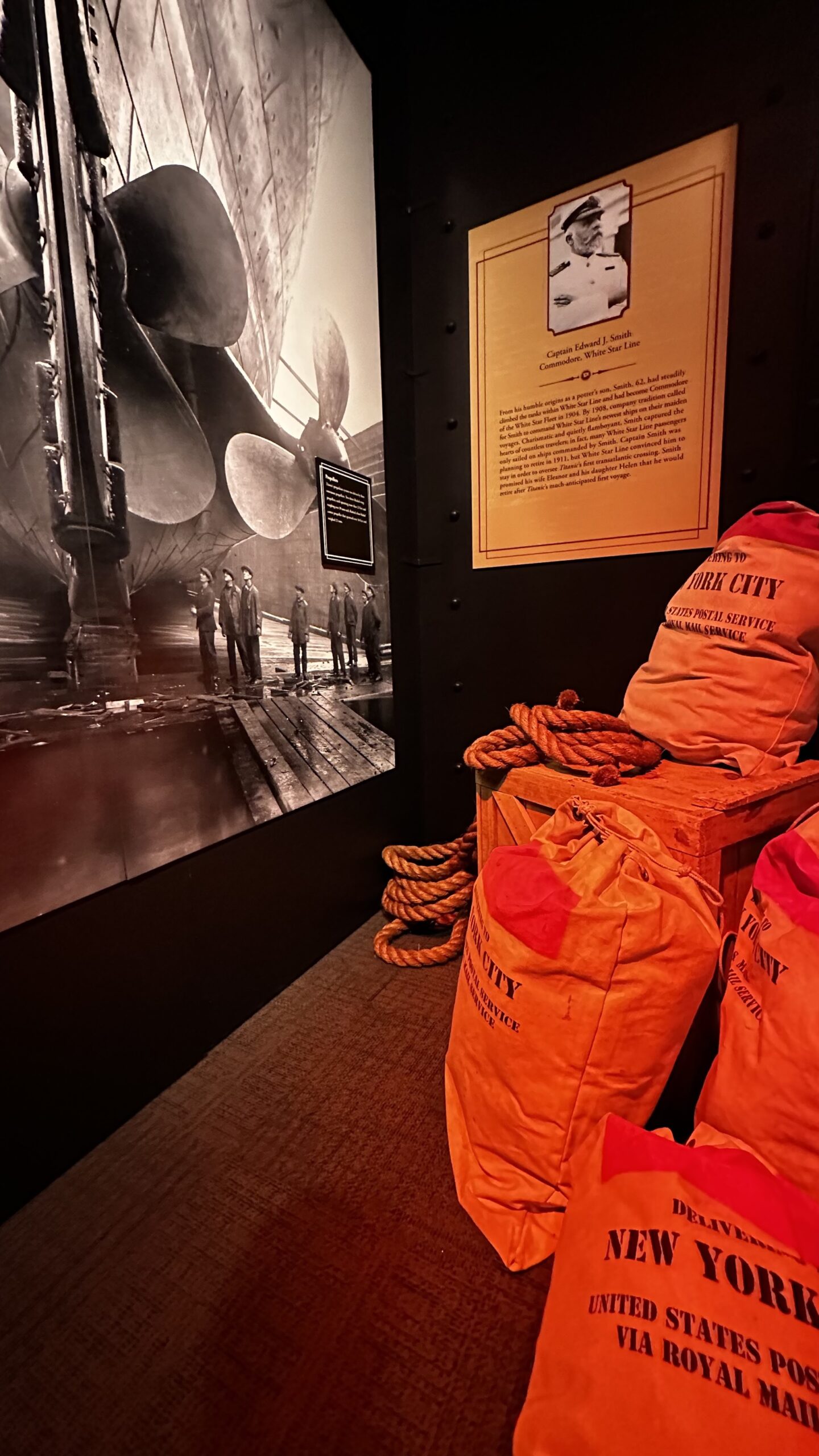
If you purchase a General Admission ticket to Carnegie Science Center, you can also take advantage of extra Titanic-themed elements:
- Showing on select days in the Buhl Planetarium, “Stars Over the North Atlantic” showcases how the stars looked above the cold North Atlantic Ocean on the historic night of April 14th, 1912.
- In the Miniature Railroad & Village, you can find and learn about five Pittsburghers who boarded the Titanic. The mix of First, Second, and Third-Class passengers included Marion and Frederick Kenyon, Mary Corey, Claire Karnes, and Sāfiyah Ibrāhīm (Sophie Abraham). Spot their miniature figures at the Homestead Train Station.
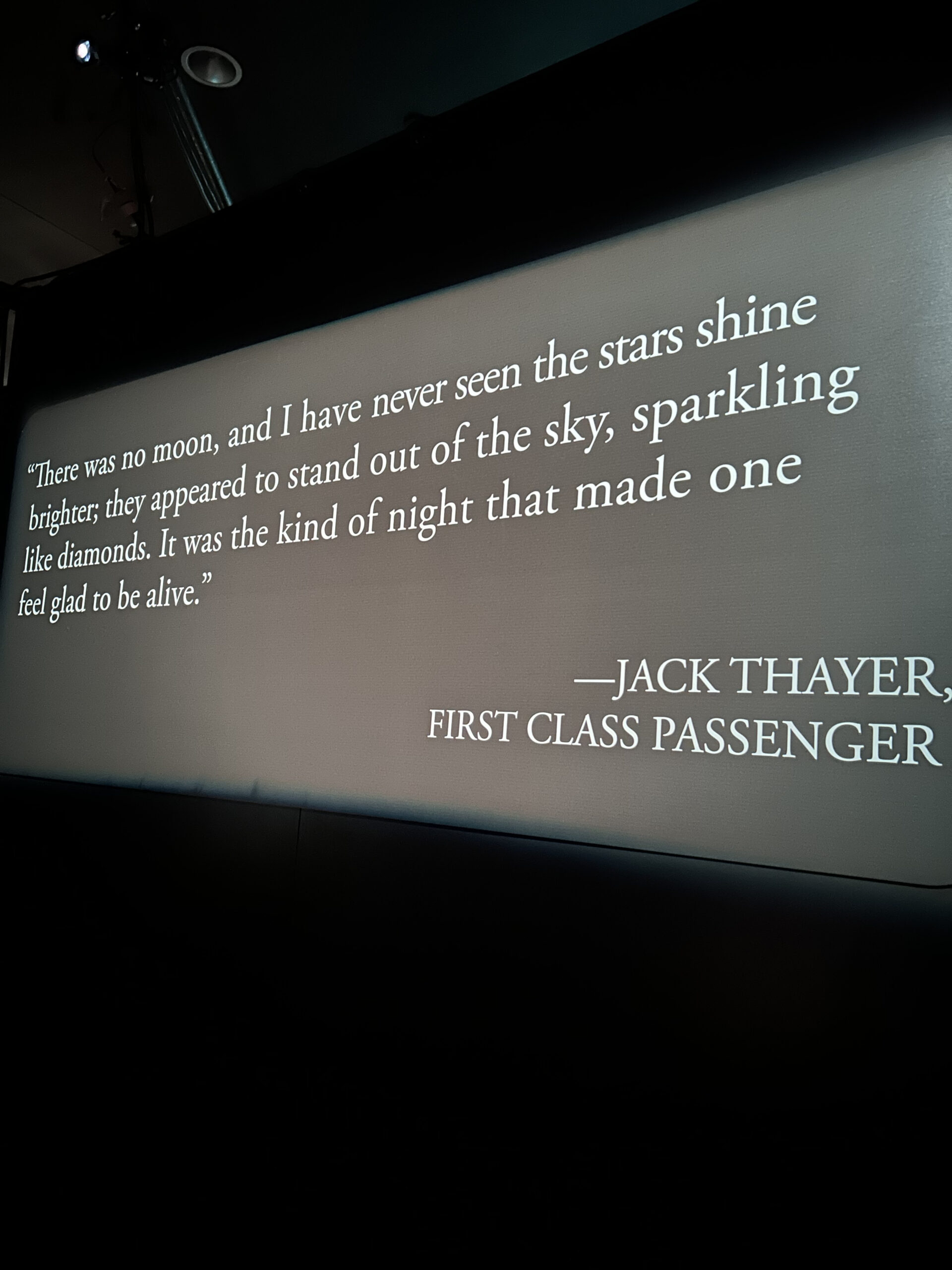
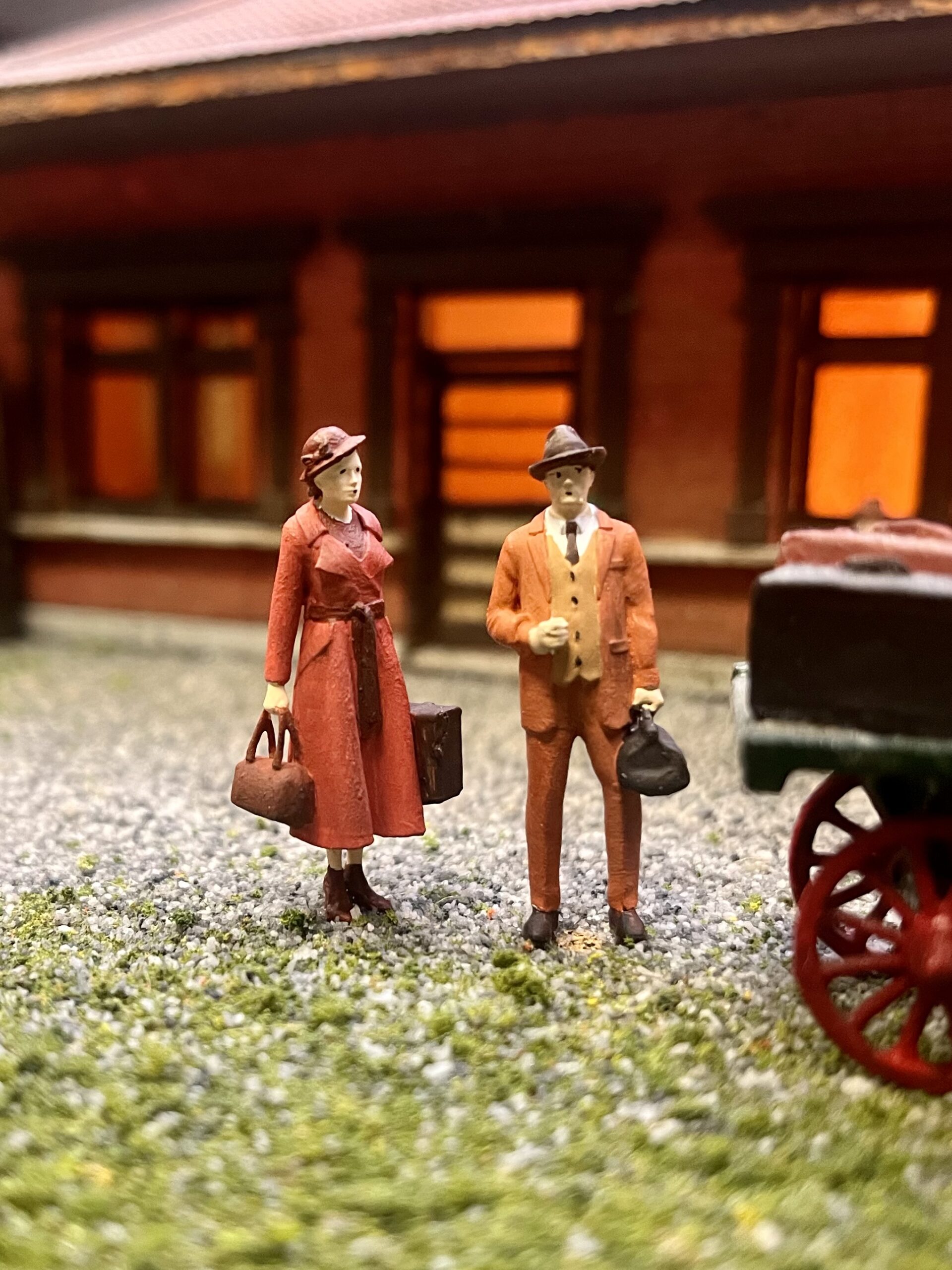
You do not want to miss this celebrated and moving experience. Get your tickets now.
This content was provided by a local, independent contributor to Made in PGH, a lifestyle blog.